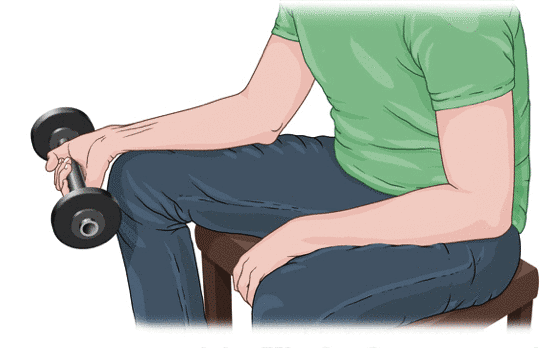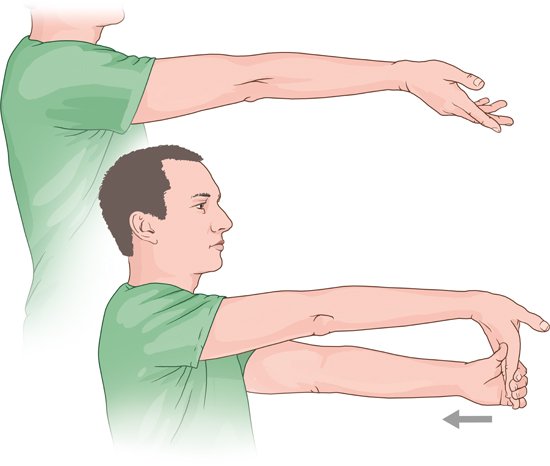Golfer’s elbow: Strengthening and stretching exercises

People who have golfer’s elbow can do special stretching and strengthening exercises to try to make the symptoms go away quicker. As shown in the following examples, the exercises are easy to do and fit into everyday life.
In most cases, the symptoms of golfer’s elbow go away within one year without any special treatment. To try to make them go away sooner, people can do stretching and strengthening exercises. The aim of “eccentric” exercises is to strengthen the flexor muscles in the forearm. These are the muscles that are used when hitting a golf ball or rowing a boat, for instance. Regular stretching is also often recommended, although it’s not yet clear whether it helps.
You can talk to your physiotherapist or doctor about which exercises are most suitable for you.


